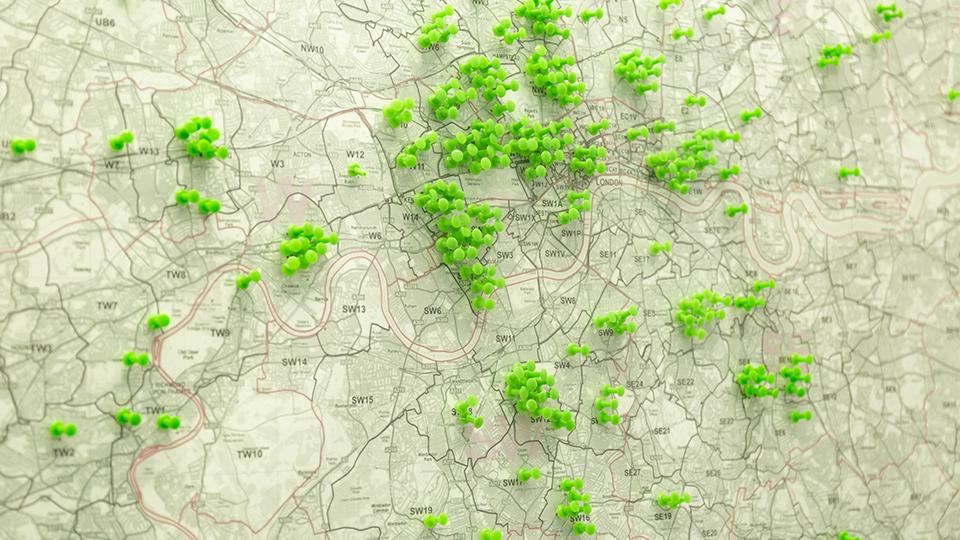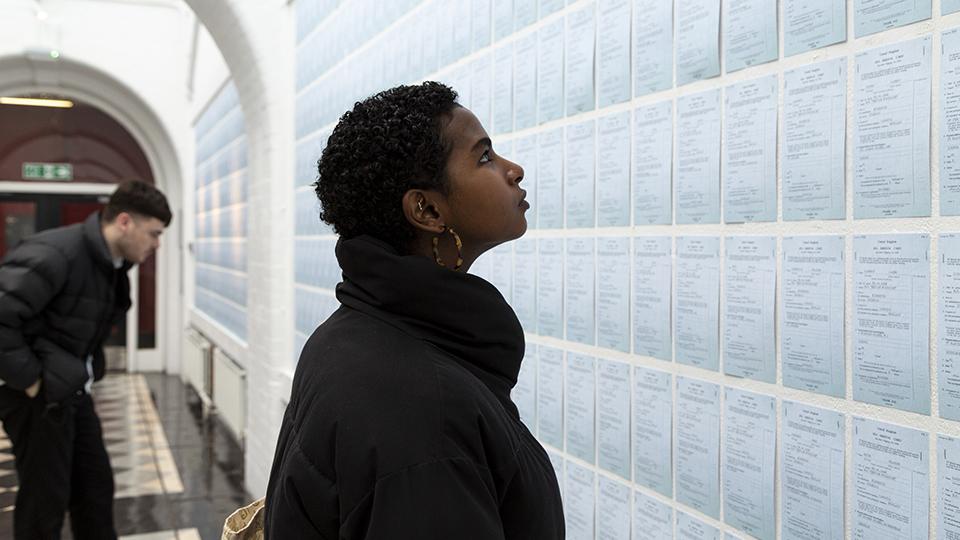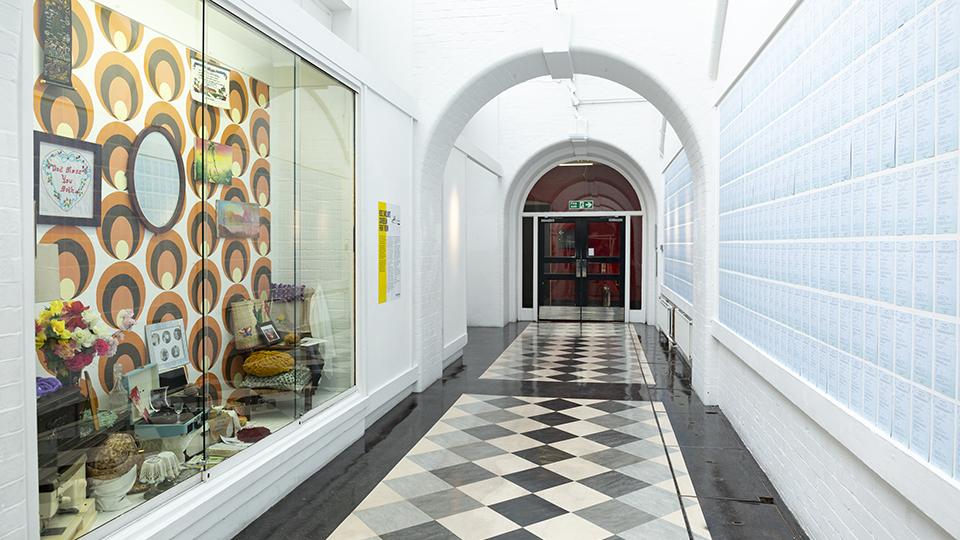Exhibition recreates lost Windrush landing cards
Primary page content
Windrush passenger landing cards destroyed by the Home Office in 2010 have been recreated and put on display at Goldsmiths, University of London.

The exhibition Windrush: Arrival 1948 (21 January - 21 February 2019) includes images and maps which illuminate and challenge assumptions made about those who arrived on the Empire Windrush more than 70 years ago.
A new transcription of the passenger list held at The National Archives has been used to make 1,027 individual landing cards, giving a unique snapshot into the lives of each passenger, including their birth date, nationality, occupation and future destination.
Visitors to the exhibition are invited to share their own or their family’s stories of arrival on mock landing cards, which will be displayed in the space.

Windrush: Arrival 1948 was conceived and curated by Dr John Price, Head of the Department of History at Goldsmiths, in collaboration with Will Cenci, Public Engagement Manager.
Dr Price said: “The exhibition seeks to ask questions, rather than present answers. We want it to act as a starting point for debate, rather than consolidating consensus, and to provide a wider viewpoint on Windrush, rather than retracing familiar steps.
“Media attention at the time focussed on the ‘500 Jamaican men, all of whom were eager to work in Britain’ while largely overlooking the other 527 passengers. Since then, there’s been a tendency to depict Windrush as the origin of settled black communities in Britain and to exemplify it as a seminal moment in black British history and identity. As a result, the long and varied histories of persons of African origin and descent in Britain can become overshadowed, overlooked and marginalised by this single event.”
Rather than focusing on it as a single moment, Windrush: Arrival 1948 presents the arrival of the Empire Windrush as part of a long and complex historical narrative.
On 21 June 1948, 802 passengers arrived on the Windrush from the Caribbean, with Jamaica the most popular country of origin (539 people), followed by Bermuda (139), England (119), Trinidad (73), British Guiana (44) and other Caribbean and non-Caribbean countries. Some 66 passengers – largely displaced WWII Polish refugees – had boarded the ship in Mexico.
Records show that 341 of those on board had registered London addresses for their onward journey after docking in the Port of Tilbury, while others planned to move on in the UK or to another country. Addresses were commonly situated in cities, London being the most common, then Birmingham, Manchester, and Bristol.
Some passengers provided institutional addresses, presumably related to their employment or student status, such as Nestles Milk Co., Westminster Bank, Lloyds Bank, Imperial Hotel, Colonial Office and the War Office. Several passengers who do not appear to be related gave the same addresses, which may have been boarding houses, or they may have given an overheard address rather than admitting they had nowhere to go.
The exhibition also features a mid-century Caribbean front room installation curated by Goldsmiths designer and lecturer Rose Sinclair, and audio arrival stories recorded at Goldsmiths in October 2018.

Windrush: Arrival 1948 is installed in the Kingsway Corridor, Richard Hoggart Building, Goldsmiths, University of London, Lewisham Way, London SE14 6NW
Visit between 9am – 9pm, Monday-Sunday, until 21 February 2019.
Entry is free.